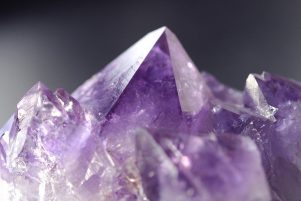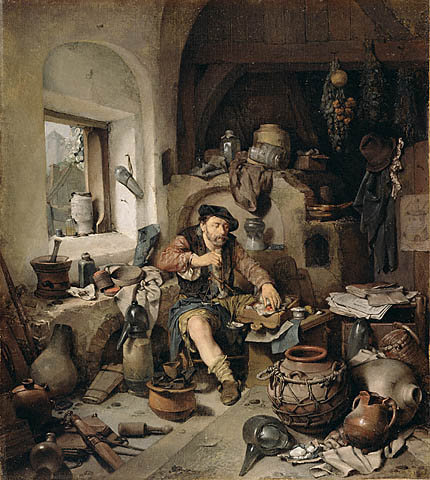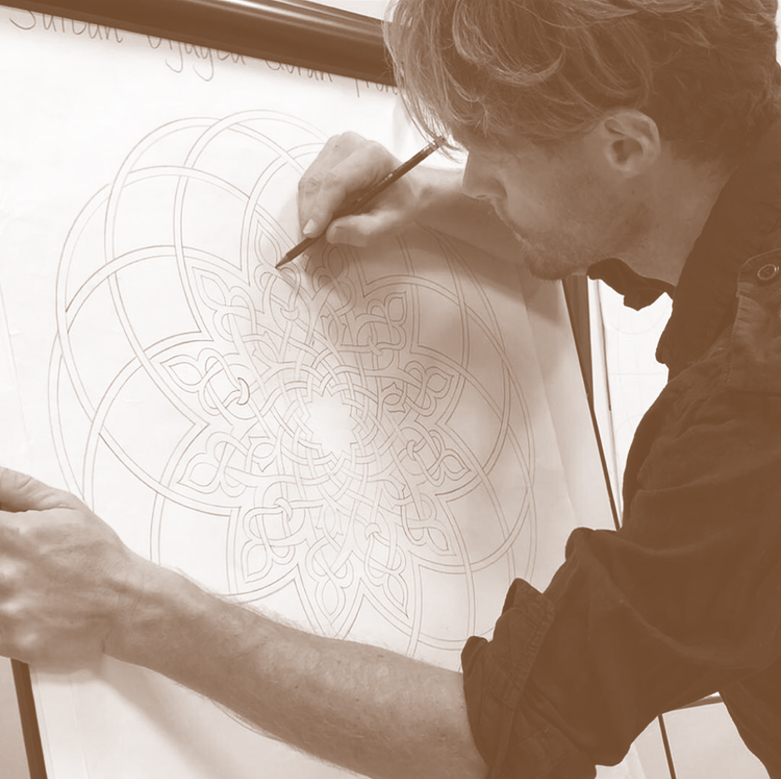The Wonders of the Mineral World
Article By Agostino Dominici
 The mineral world, and more specifically the world of precious stones and metals, has always been invested with an aura of awe and mystery. Throughout the ages, kings, magicians, priests and alchemists have often surrounded themselves with special objects born from the mineral world. Objects like magic rings and swords, sacred statues and amulets have always accompanied the characters of legends and myths, endowing them with unusual powers and virtues. All of these objects came from the hidden world of minerals, a world in which life takes its peculiar form. A world of ‘solid matter’. A world in which the universal substance of the alchemists, the Prima Materia, has reached its highest state of condensation.
The mineral world, and more specifically the world of precious stones and metals, has always been invested with an aura of awe and mystery. Throughout the ages, kings, magicians, priests and alchemists have often surrounded themselves with special objects born from the mineral world. Objects like magic rings and swords, sacred statues and amulets have always accompanied the characters of legends and myths, endowing them with unusual powers and virtues. All of these objects came from the hidden world of minerals, a world in which life takes its peculiar form. A world of ‘solid matter’. A world in which the universal substance of the alchemists, the Prima Materia, has reached its highest state of condensation.
Many sages and philosophers have pointed out that even the densest state of matter shows signs of life and activity and wherever there is activity, motion, vibration, there is also consciousness. In short, they tell us that, there is only ‘one life’ which expresses itself through various forms (or degrees of substance). In this sense, the minerals are also animated ‘beings’. In them life manifests itself in a passiveness and resistance which is their chief characteristic. The mineral kingdom is also connected to the phenomenon of ‘radioactivity’. What is, for instance, the intrinsic value of a gem? It is its power of radiance, its radiation. Its degree and quality of radiation seems to be connected to its evolutionary condition. Something that can be deduced by looking at their atomic structure. The amazing ability of a diamond to reflect light is the witness to this evolutionary process in which its inner structure has reached a kind of geometric perfection.
We find the same type of symbolism in the metal gold, in which we observe its great power to radiate light. Gold represents a perfected state of metallic nature. We could call it a transcendental state, because if we take the view that solar light is just the visible reflection of a corresponding invisible ‘spiritual light’, we can compare gold to a coagulated state of spiritual energy. With this idea in mind, we can understand better why there has always been a feverish search to find and possess gold. And also why in antiquity, gold has always been used for making the most sacred artefacts and tools.
Gold is a good starting point to introduce another important element in the life of minerals: the connection between microcosm and macrocosm. It is said that the characteristic and qualities found in precious stones and metals arise from their connection with the heavenly bodies. From late antiquity until the mid-eighteenth century, the number of metals known and recognised as such was the same as the number of planets used in traditional astrology.
The planet-metal correspondences are as follows: Saturn-lead, Jupiter-tin, Mars-iron, Sun-gold, Venus-copper, Mercury-mercury and Moon-silver. Belief in a linkage of these ‘seven planets’ with the ‘seven metals’ reaches back into prehistory. There was no age when silver was not associated with the moon or gold with the sun. These links defined the identities of the metals. Only at the beginning of the eighteenth century did the character of the metals cease to be explained in terms of their cosmic origins and instead started to be explained in terms of their underlying atomic structure. As presented in Wilhelm Pelikan‘s book, The Secrets of Metals, these correspondences are not only symbolic but have a scientific base as well.
Metals in particular were said to embody the purest planetary qualities. This also explains why the operative side of alchemy has always been linked to metallurgy. In alchemy we find the very ancient idea that in the womb of the Earth there is a constant process of gestation which gives birth to the metals. ‘Mother’ Earth keeps these metals in her womb to allow them, after a long period of time, to mature. The extraction and use of metals had a religious-sacred dimension. The metallurgist-alchemist’s function was to deliver into the world the metallic fruits hidden in the belly of the Earth. Therefore, by extracting, transforming, shaping and refining their properties, he contributed to accelerating and perfecting this evolutionary process, which was proper of Nature.
Turning now our attention to stones and gems, we discover that since the remotest times, their special characteristics and properties were studied and even kept secret. We find, for instance, stories of ancient people who knew how to make stones malleable like clay or knew where to erect a megalith so that it would naturally be charged with telluric and cosmic currents. Many natural stones were considered sacred and endowed with life. Some of these stones, called Baetylus, were said to summon a vision of a god or goddess and increase fertility.
Stories which relate sacred stones with mystery cults and creation myths also abound. We could mention the BenbenStone of pharaonic Egypt, the Omphalos of Delphi, the Foundation Stone in the Dome of the Rock in Jerusalem, the Lapis Niger of archaic Rome and the Kaaba at Mecca, etc.
In India, since pre-Vedic times, precious stones were used in an uncut form for healing as well as for religious purposes. And even nowadays, there are Ayurvedic doctors and astrologers who prescribe precious stones, cast on rings, to be used as protective amulets or to balance the subtle energies in the body. The use of precious stones in breastplates and necklaces are also connected to this type of ‘magical’ usage.
In the strange times in which we live, ruled by greed for natural resources, the Earth, deprived of its most hidden fruits, seems to stand still in horror. One day, perhaps, gems, metals and gnomes (the spirits of nature said to be in charge of the mineral world) will return to enchant the world as they once did, but for now, they seem ready to pack up their luggage and leave.
Image Credits: By Dieter 444 | Pixabay | CC By PD
The entity posting this article assumes the responsibility that images used in this article have the requisite permissionsImage References
By Dieter 444 | Pixabay | CC By PD
Permissions required for the publishing of this article have been obtained




What do you think?